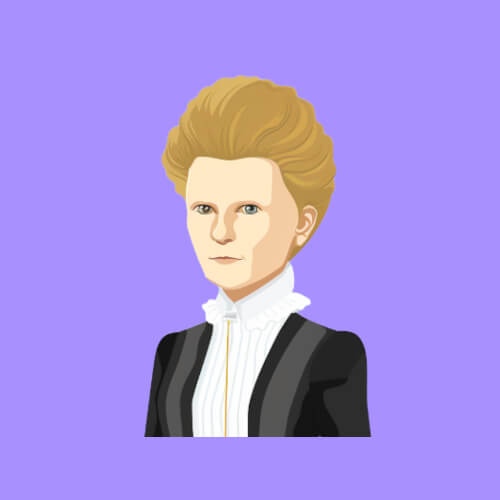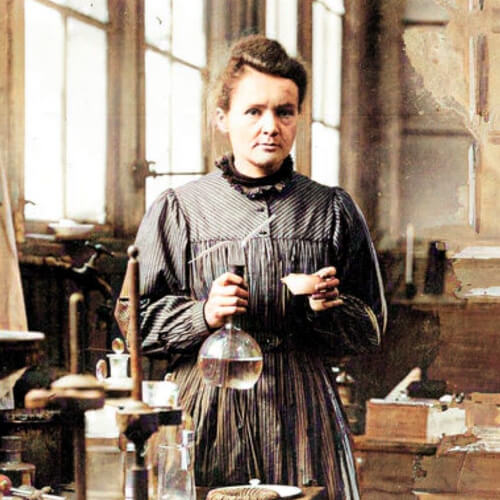



Marie Salomea Sklodowska–Curie (7 November 1867 - 4 July 1934) was a Polish chemist and physicist, known for her groundbreaking discoveries on radioactivity. For her work, she became the first woman to win the Nobel Prize as well as the first person—and still today one of only four scientists—to earn two Nobel Prizes.
Originally named Maria Sklodowska, Curie was born in 1867 in Warsaw, Poland. She came from a family of educators, and her parents instilled in her a love for learning and knowledge. Despite facing many challenges as a woman pursuing education in a male-dominated field, Curie was determined to follow her passion for science.
Curie's most significant breakthrough came in her research on radioactivity. Alongside her husband, Pierre Curie, she discovered two new chemical elements: polonium (po) and radium (Ra). Their groundbreaking work not only expanded our understanding of the atomic world but also revolutionized medical treatments. Curie's pioneering work led to the development of new diagnostic tools and radiation therapy, saving countless lives.
In recognition of her exceptional contributions to science, Marie Curie received two Nobel Prizes. In 1903, she became the first woman to win a Nobel Prize in Physics, sharing the honor with her husband, Pierre Curie, as well as Antoine Henri Becquerel for their discoveries in radioactivity. Later, in 1911, Curie received her second Nobel Prize, this time in Chemistry, for her isolation and study of radium and polonium.
The curie (Ci) is a non-SI, or non-metric, unit used to measure radioactivity. One curie has the equivalent radioactivity of 1 g of the metal radium (Ra), the chemical element that Marie Curie discovered. The unit was defined in 1910 in order to honor both Pierre and Marie Curie for their work together in the fields of chemistry and physics.
The old, worn out wooden shed was located behind her and her husband's house and was originally used for storing firewood. Inside the shed, she had a basic setup with a few essential tools for her research on radioactivity. She had simple glassware like test tubes, beakers, and flasks that she used to handle radioactive materials.
Her experiments required precise measurements, so she had scales and balances to weigh the substances she was working with. Additionally, she used simple electrical circuits and batteries to conduct her experiments. She would often set up her apparatus on makeshift tables or benches inside the shed, making the most of the limited space available.
While conducting her experiments, Curie observed that certain elements emitted rays that had the power to penetrate, or go through, matter. She called this new discovery "radioactivity," building off the Latin word "radius," meaning ray or beam.
During World War I, Mary Curie and her daughter, Irène, developed mobile X-ray units that came to be known as "Petits Curies," French for "Little Curies." These units were small trucks equipped with X-ray machines and darkrooms. They were used to provide on-the-spot X-rays for injured soldiers right on the battlefield so that doctors and surgeons could treat soldiers more effectively.
Curie conducted her research in a time when the dangers of radiation were not fully understood. Even though she passed away in 1934, her notebooks, furniture, and laboratory equipment are still radioactive due to the radioactive substances she worked with. Today, her papers and belongings are stored in lead-lined boxes and can only be handled while wearing protective gear.